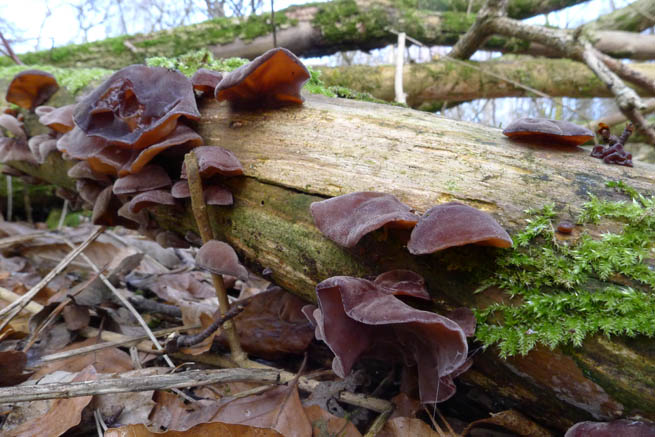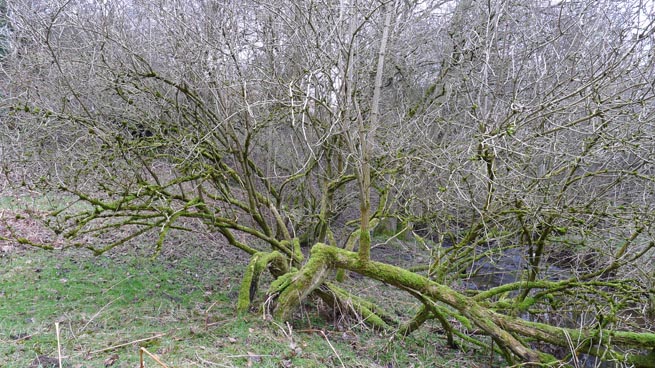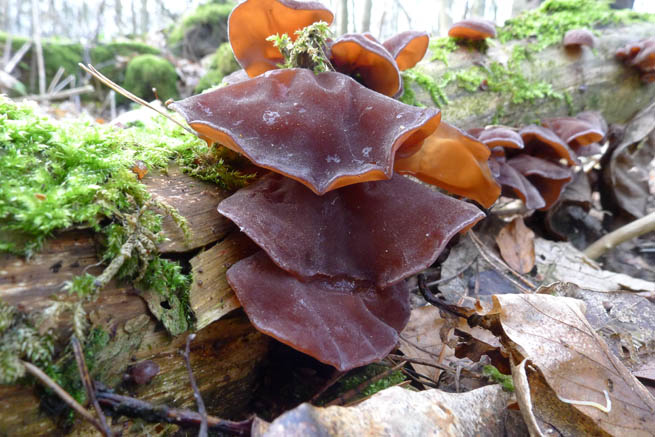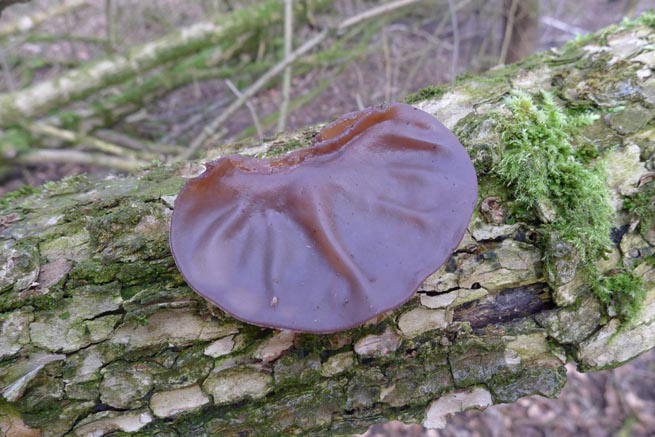
I was out in the woods with a couple of clients on a private 2-day course. They were interested in improving their plant and tree identification as well as refreshing friction fire-lighting skills – both bow-drill and hand-drill.
I had planned to spend most of the daylight hours of the first day exploring the woods, looking at how to identify tree species in winter, when many of them are without leaf.
This would also be a good format within which to examine various edible, medicinal or poisonous plant species.
The idea was that while on this ‘plant and tree walk’ we would also assemble all the materials needed for making bow-drill and hand-drill apparatus as well as gathering suitable tinders to take our embers to flame.
In particular we were looking for Elder, Sambucus nigra, to provide us with the raw materials with which to make hand-drills.

Apart from its usefulness for fashioning hand-drills, it has a number of other uses and is therefore a species very much worth knowing. Also, Elder is pretty common, being widely-distributed in Europe, North Africa and Western Asia.

That said, even though the area of woodland we were in is large, there are not many specimens of Elder growing there.
After quite some time I spotted a couple of large specimens that had been wind-blown a good number of years ago. Some of their roots had obviously remained intact and continued to nourish the trees. They certainly seemed healthy enough – one of the specimens was beginning to put out new leaves (quite incredible for January).
Despite the horizontal trunks, there was a good amount of vertical growth from them. This provided the materials we needed for hand-drills.
Some of the older limbs were festooned with Auricularia auricula-judae, a fungus commonly known as Jew’s Ear or Jelly Ear.

The auricula-judae part of this species’ name translates to ‘Judas’ Ear’. The association with Judas Escariot comes from the folklore that he hanged himself from an Elder tree and the fruiting body of the fungus is a manifestation of him that remains with the tree.
The fruiting body certainly looks like an ear and in this part of the world Auricularia auricula-judae is largely, although not exclusively, found growing on Elder. It is common in temperate and sub-tropical regions around the world.
Further afield the fungus can be found growing on other species, for example on Eucalyptus in Australia.

The fungus is edible and easy to recognise; this makes it a relatively safe fungus to forage. As with all wild fungi, it should be cooked. This fungus has a mild ‘mushroomy’ flavour. It also has the tendency to take on other flavours, such as that of the stock it is cooked in.
In the West it isn’t generally considered a particularly good edible fungus, however, being somewhat chewy if not cooked properly.
It is popular in Asia though and, known as Wood Ear, is an ingredient of hot and sour soup.
If the recipe above is a little involved, why not combine it with Common Sorrel in a somewhat more simple broth?
Let us know in the comments if you have tried this fungus. Do you like it?
Oh, and yes we did do some hand-drilling…

Latest posts by Paul Kirtley (see all)
- The Swedish Firesteel - January 5, 2023
- Kevin Callan and Paul Kirtley in Conversation - April 25, 2020
- Kevin Callan and Ray Goodwin in Conversation - April 18, 2020

Austin Lill
I absolutely detest mushrooms (the Devil’s work) and therefore have no real interest in wild fungi. That said, the fact that you have confirmed that Jews Ear absorbs flavours does make me want to try the Fergus Drennan recipe that came with the last issue of Bushcraft and Survival Skills magazine which is Cherry Brandy infused chocolate coated Jelly Ear
Paul Kirtley
Austin
Sounds like that could be an interesting concoction. I wonder what else could be soaked in brandy and coated in chocolate to improve its flavour?….
All the best,
Paul
Pauline and Chris
We eat them. Good in a cream sauce with fish or chicken dishes. They need a good wash. Wash, drain and wash again and agin until water is clean. Cut into thin shreds. I find they do need cooking at least 30 minutes and yes they take on the flavour of onions and garlic. Have gathered them when fresh and soft. Also in dry weather, they need a ten minute soak in hot water to make them swell to at least twice their size. Even when frozen they are fine when thawed out. It is good to know that even in mid-winter we can go out foraging and always come back with something good to eat.
Paul Kirtley
Hi
Thanks for your comment. It’s good to hear from another fan of this fungus.
Reading your description of flavours and food partnerings – particularly the creamy sauce – is making me hungry! 🙂
Good tip regarding re-hydrating in dry weather. This can also be used if you collect them moist while out in the woods – you can dry them in camp and store them for a while.
Your comment “It is good to know that even in mid-winter we can go out foraging and always come back with something good to eat.” highlights why, combined with relative ease of identification, why this fungus is an important species to know about from a bushcraft and survival perspective.
Thanks again and all the best,
Paul
Elen Sentier
I just found this, lovely pic of the Jew’s Ears. Got hungry reading the recipes :-).
Paul Kirtley
Hi Elen
I’m pleased you found this. The recipes are good aren’t they? 🙂
All the best,
Paul
stuart dart
Interesting article Paul, especially the bit about Elder putting out leaves already. The Elder in my hedge has been showing leaves since just before new year, and the really cold weather that we’ve had since then doesn’t appear to have bothered them at all. Very strange. Interesting to see that you’ve been seeing the same thing down your way tool.
All the best,
Stuart
Paul Kirtley
Hi Stuart,
Yes, it’s surprising to see the leaves starting to emerge so early. Interesting to read what’s going on in your area too. Thanks for sharing 🙂
All the best,
Paul
Tim Bishop
I have used them cut into strips and added to a 6 hour straw hot box cooked shin of beef recipe. Beef was meltingly tender, but the Jelly Ear was still crunchy. Now wonder it is used in chinese cooking. My fussy eater daughter ate it all without the usual taking bits out to put on the side of the plate, a result.
Dave Howard
Hi Paul, Thanks for this useful snippet of information. The Ground Elder grows like wildfire in my shrubberies, however the black/common Elder is relatively scarce around here, I found a couple but they are in someone`s back garden and definitely “out of bounds”. I had never thought of using the Ground Elder for food, but having read your article I will have to try some, was thinking of steamed with a couple of free range poached eggs. Not too sure about the Jews` ears though !
All the best, Dave.